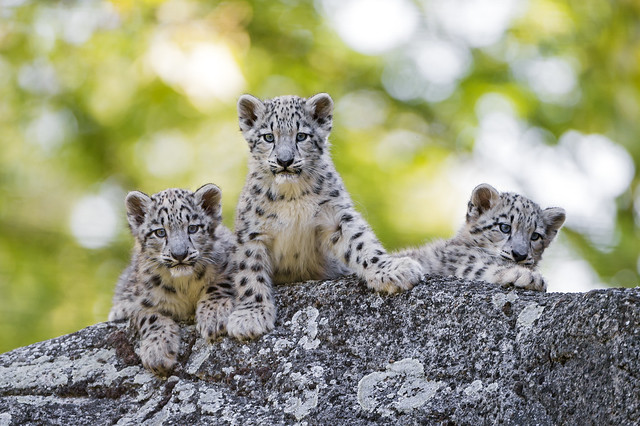WWF calls for global action
 Image by Tambako The Jaguar
Image by Tambako The Jaguar
The World Wildlife Fund as issued a scathing report, entitled ‘Fragile Connections: Snow leopards, people, water and the global climate‘, that warns that the negative effects of climate change could completely wipe out the remaining leopards.
The snow leopard population has declined by 20 percent since 2000, largely because of poaching and habitat loss in the high mountains of Central Asia. As global temperatures rise, the habitat of the elusive big cats is growing increasingly unsuitable for them.
“Climate change is a major risk, but we also need to concentrate on other factors,” said Sami Tornikoski, leader of the WWF’s Living Himalayas Initiative. “Snow leopards won’t survive for long unless we tackle climate change alongside other threats such as poaching, retaliatory killings by herders, declining prey species, and poorly planned development.”
These cats require a large swath of territory and the traditional habitat of snow leopards spans across the mountain highlands of 12 countries: Afghanistan, Bhutan, China, India, Kazakhstan, Kyrgyz Republic, Mongolia, Nepal, Pakistan, Russia, Tajikistan, and Uzbekistan.
The WWF’s study reports that only 14 percent of these mountains have been researched or subject to conservation efforts, as evidenced by the 200-plus new species recently discovered in Central Asia.
Climate change will not only affect the snow leopards. Many mountain communities and nearly all the communities lying at the base of the mountains, rely on a complex water system of winter storms, snow melt, and monsoons. This cycle affects 21 countries in the area, including China, which is particularly vulnerable.
“Climate change could drastically alter the flow of water down from the mountains, threatening the livelihoods of vast numbers of people across the continent,” according to the WWF report.
Increased global temperatures will cause the tree line to shift higher up the mountain. Not only will this make it more difficult for snow leopards to hunt prey, it will also make the air dryer, shift the timing of water availability, and possibly melt the permafrost and glaciers.
“It is bleak, but it’s not hopeless. I think climate change is a new, emerging threat and it will definitely have an impact on snow leopards,” said Brad Rutherford, the executive director at the Snow Leopard Trust, the oldest organization working to protect the animal. “It’s hard to measure the precise impact that a rise in tree lines could have. It could change prey species availability for the cats, but the question is ‘what happens above?’ Does this open up new areas (in the mountains) for the prey species? It’s difficult to know exactly what could happen in the long-term.”
In addition to increasing governmental nature conservation efforts and crackdowns on poaching, the WWF is encouraging researchers to obtain more photos and videos of the mysterious cats. For a taste of how close to impossible it is to gather footage of snow leopards, check out this behind-the-scenes clip from the making of Planet Earth.
“I think sometimes with snow leopards and other species, people place it into a ‘do we save people or wildlife?’ question. They say ‘why would you help cats when people are in trouble, when people are struggling around the globe?’ ” said Rutherford. “The big takeaway I have, after 15 years in this field, is that it’s a false choice. Helping snow leopards means you are helping humans. People share that landscape with those cats. Helping snow leopards helps people.”
To mark the seriousness of the threat, the WWF made Friday October 23, 2015 the first ever International Snow Leopard Day in order to raise awareness of the endangered species.
“The snow leopard is considered to be the guardian and indicator species of the high mountains of Asia. Mysterious and elusive, the cat has fascinated explorers, researchers and conservationists across the world… The WWF campaign on the snow leopard is an initiative that will help the conservation of the species and the threats it faces globally,” said Ravi Singh, Secretary General and CEO, WWF-India.
source
No comments:
Post a Comment